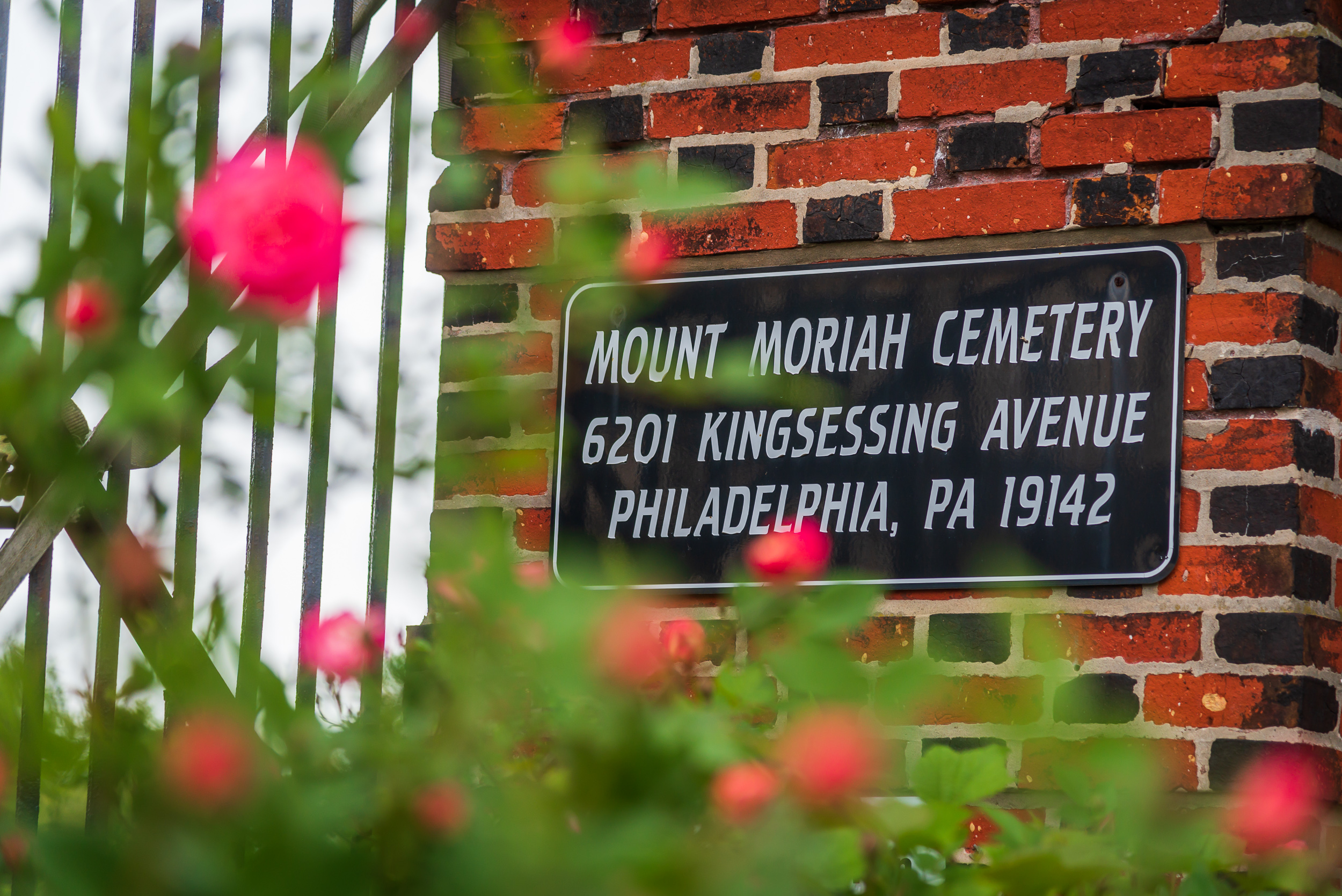NOTE FROM ADAM LEVINE In a parallel career to my work for the Philadelphia Water Department, over the past 25 years I have written five book and hundreds of articles about gardens and horticulture. The following story is about an unusual part of the Cobbs Creek watershed, a Victorian-era cemetery that was almost swallowed back into the woods but has made a comeback thanks to dedicated group of volunteers. This article first appeared in the Summer 2021 issue of GROW, the magazine of the Pennsylvania Horticultural Society (for which I was editor in chief from 2014 to 2023). You can view the original story at the GROW online portal. Thanks to PHS for allowing me to reuse the story here, and to Rob Cardillo for providing the photographs, which were taken in April and May 2021.
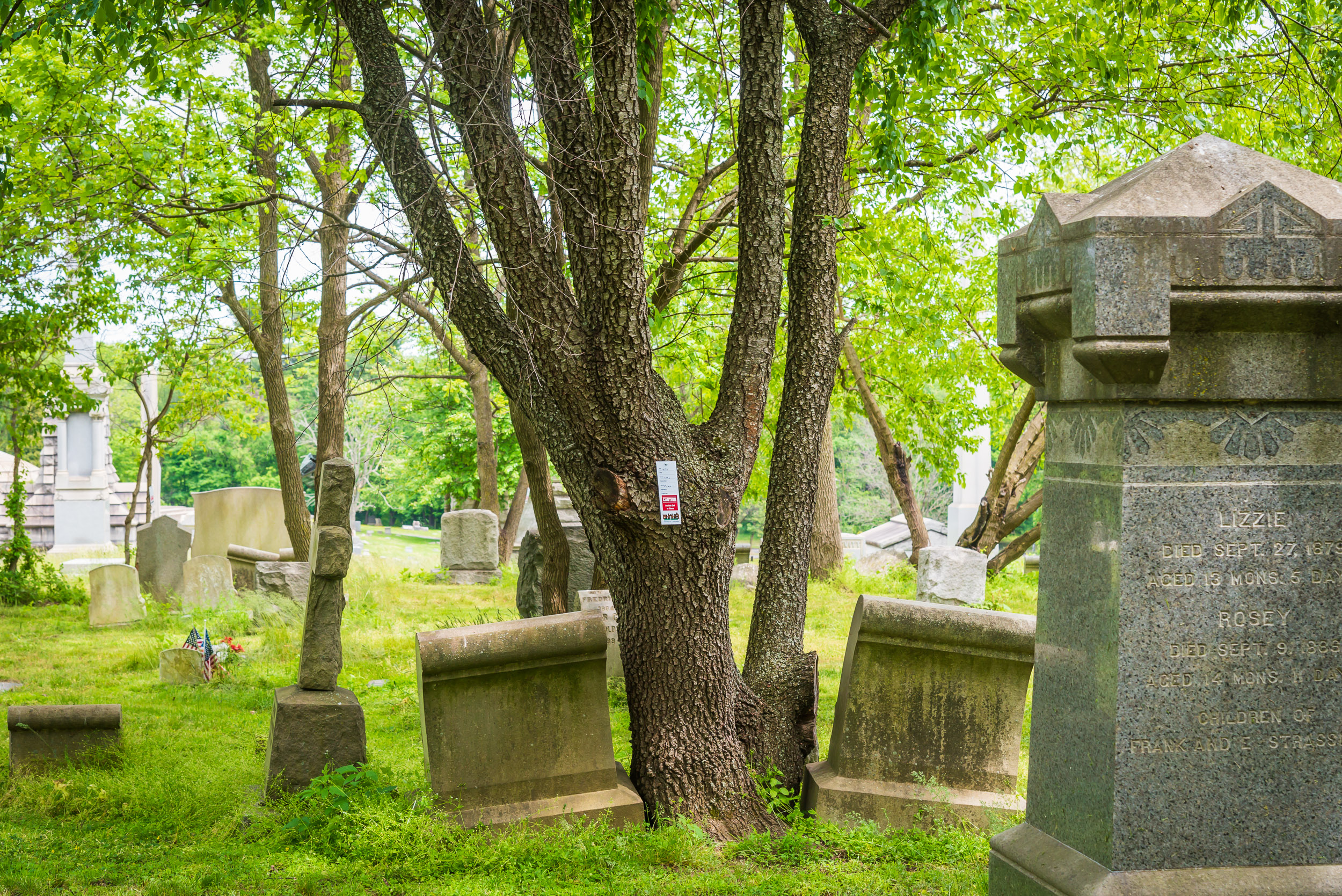
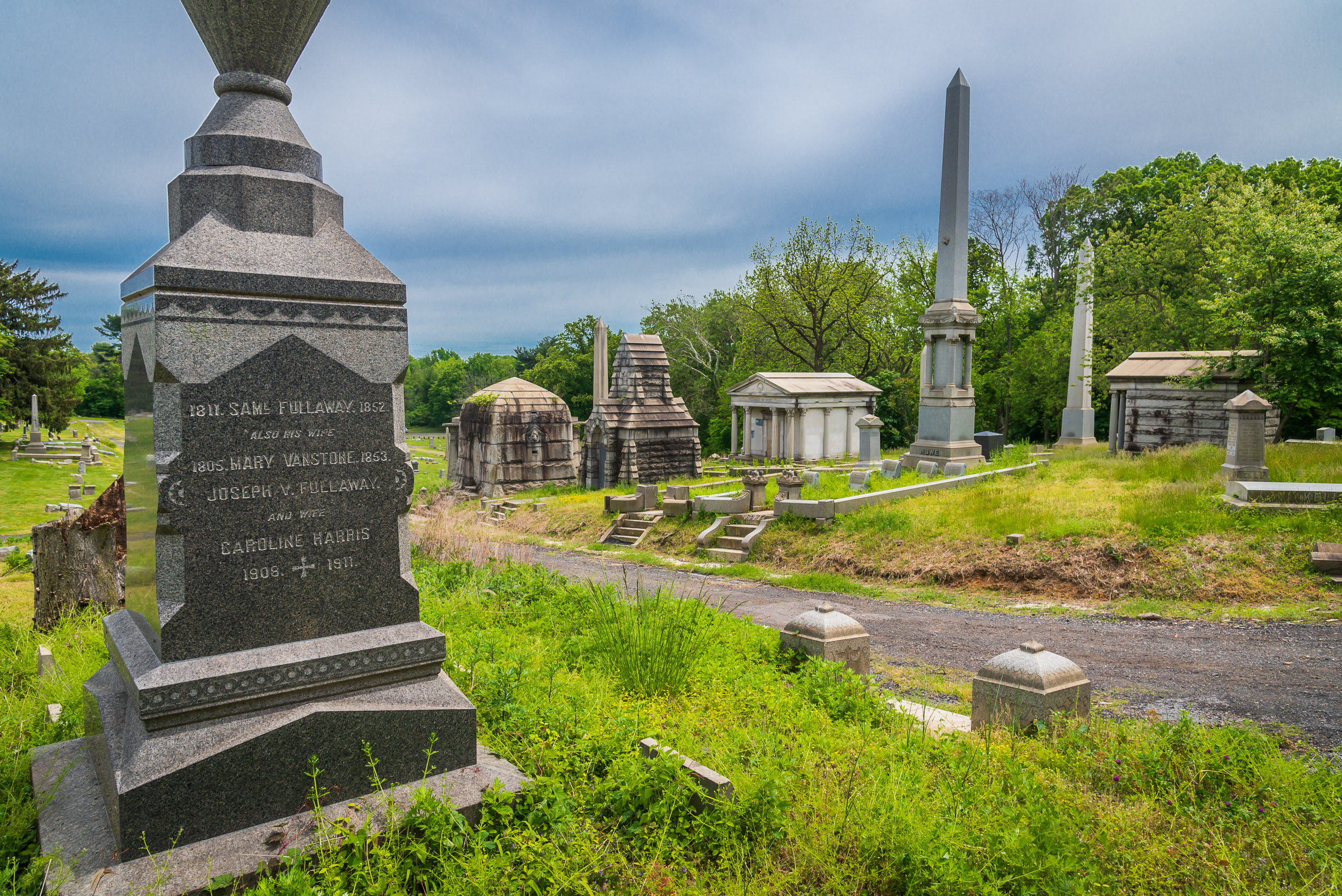
Sprawling across the valley of Cobbs Creek, with sections in the city of Philadelphia and the borough of Yeadon in Delaware County, Mount Moriah is both a remarkable Victorian burial place and a testament to the power of nature to reclaim what was once its own. The rolling hills of the cemetery’s 200 acres are the final resting place of more than 180,000 people, whose graves are decorated with thousands of examples of funereal art. Due to the venerable ages and large sizes of some of the trees, the property has also been designated an arboretum.
Unfortunately, the association that ran the cemetery abandoned the property in 2011, by which time decades of poor maintenance had allowed high grass, shrubs, and even full-size trees to take root among the graves. Shortly after the abandonment, the all-volunteer Friends of Mount Moriah Cemetery was established, and that group has been working steadily since to remove invasive plants and reestablish mowing among some gravesites while selectively leaving groups of native trees to supplement the arboretum. “The goal,” says board member Susan Niemann, “is to create a beautiful sanctuary where people can come and enjoy the trees, the birds, and the sculpture.”
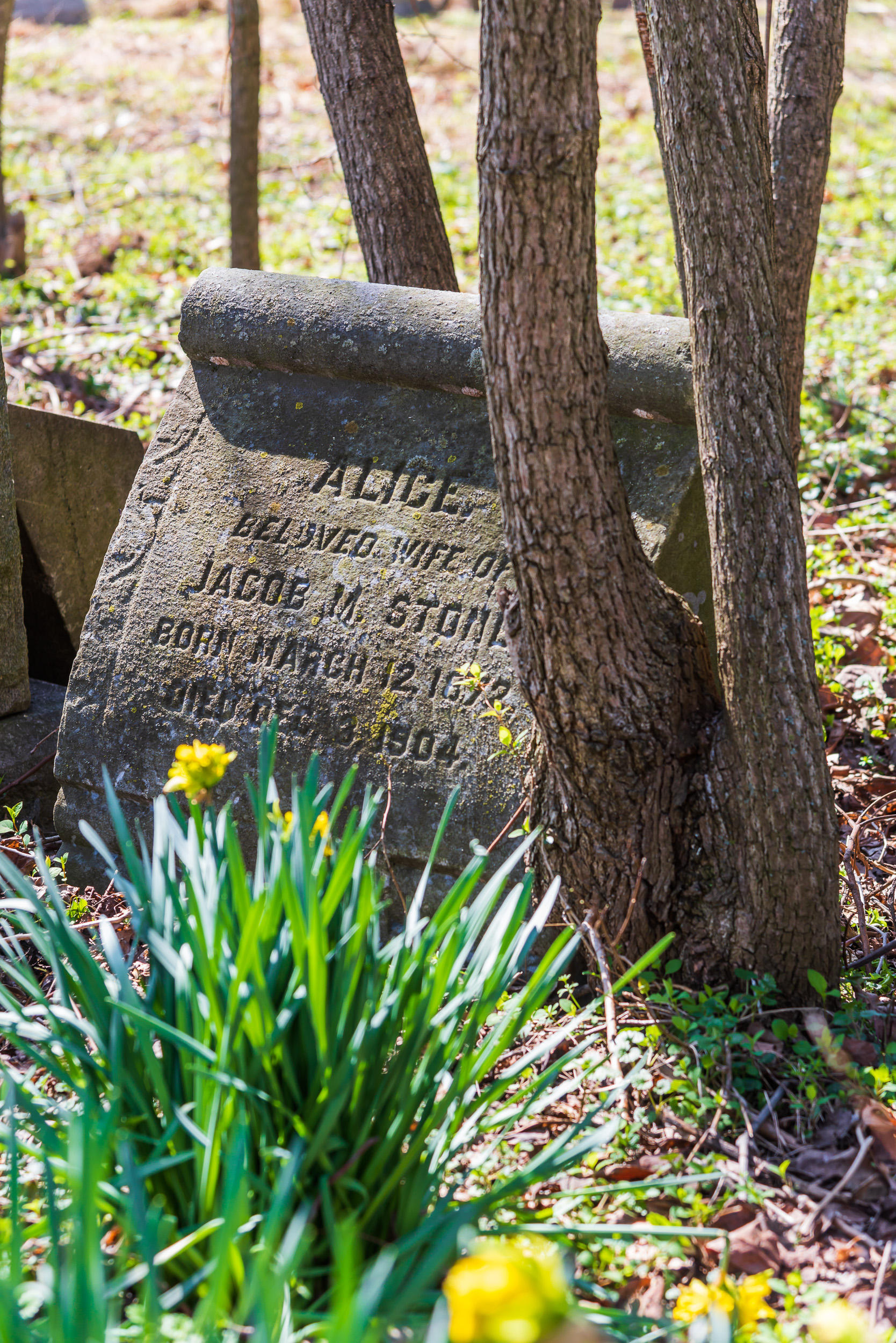
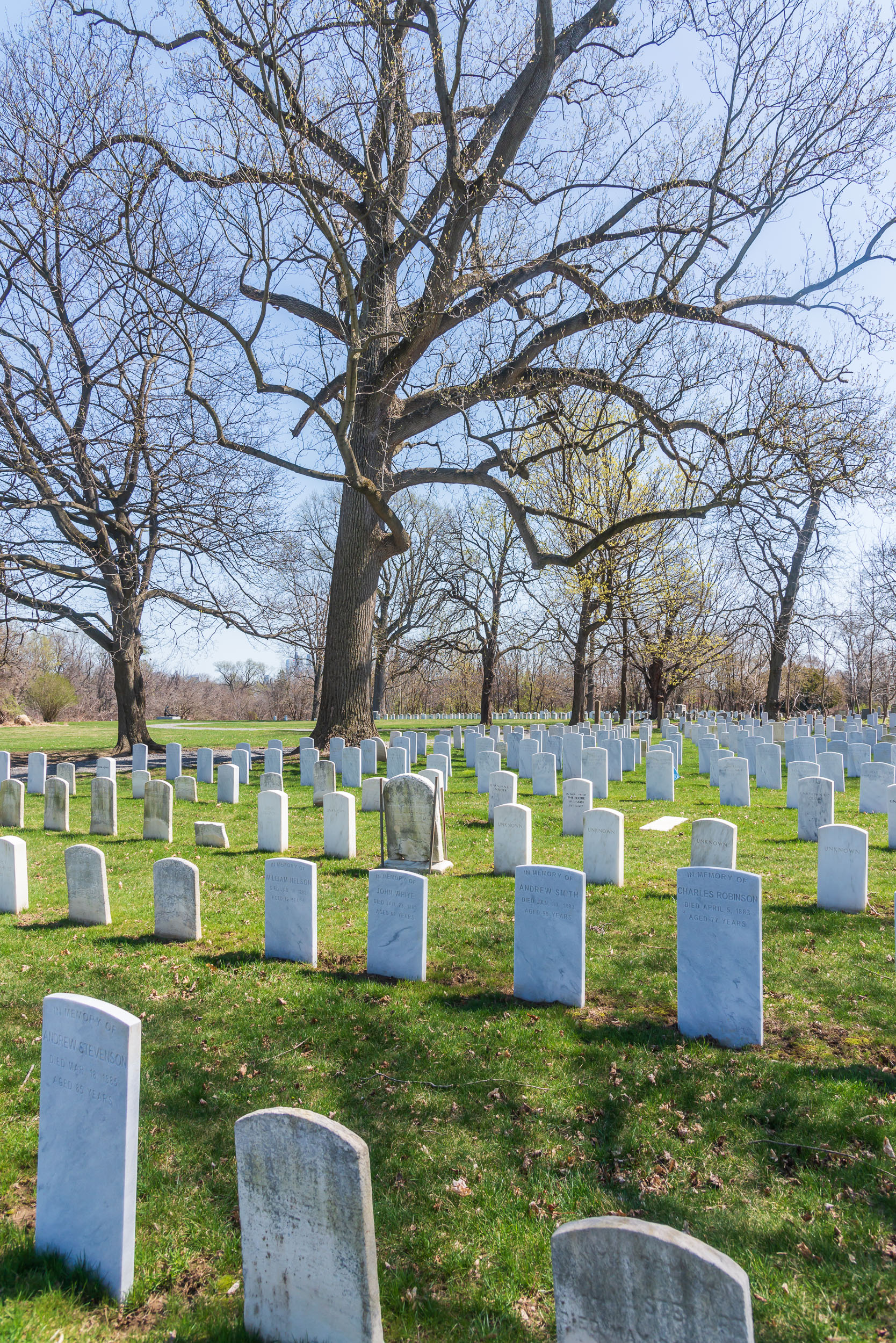
THE BACKSTORY
Mount Moriah Cemetery Association was founded in 1855 as part of a rural cemetery movement that advocated the creation of landscaped, parklike burial grounds on the outskirts of big cities. By the 1950s, the once-rural site of Mount Moriah was surrounded by residential neighborhoods in Philadelphia and Yeadon, with Cobbs Creek serving as the dividing line. In the 1980s, maintenance of the grounds began to decline. Mowing was neglected, and large sections of graves disappeared into newly sprouted weeds and woods.
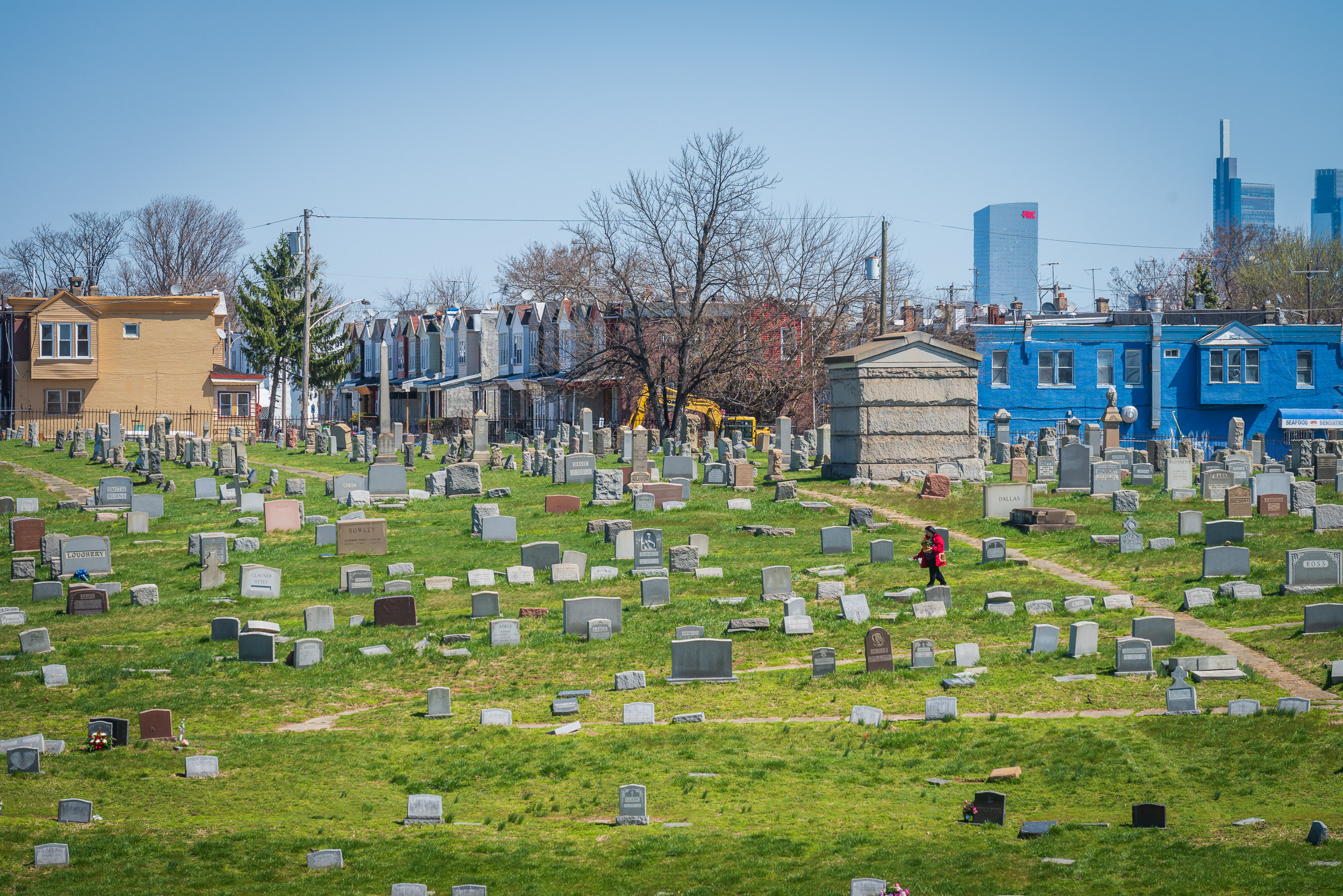
“Many people were afraid to go into the cemetery even before it was abandoned,” says Jennifer O’Donnell, volunteer coordinator of the Friends group. “In addition to high grass, overturned headstones, and general neglect of the property, there were feral dogs, burned out cars, piles of tires and dumped trash and debris, and illegal activities within the grounds.”
Grand monuments and mausoleums ornament the Yeadon side of the cemetery. The brick cemetery office stands at the Philadelphia entrance. Paulette Rhone, whose husband is buried in the cemetery, spearheaded the Friends group and served as its president until her death in 2019. She and other board members recruited volunteers to begin clearing the cemetery of accumulated trash and overgrown vegetation. Rhone, who is now buried next to her husband, “brought dignity back to the place,” Niemann says. “I was out in the cemetery one day and came across a family having a barbecue, grilling hot dogs and hamburgers. One of the family members asked if it was okay to do this, and I assured him it was. ‘My sister is right over there,’ he told me, pointing out a nearby gravestone, ‘and we wanted to be here for her birthday.’ ”
Adds O’Donnell: “One of the things our volunteers are pleased to see is that more and more people are returning to the cemetery every year, both for recreation and to visit the graves of their loved ones.”
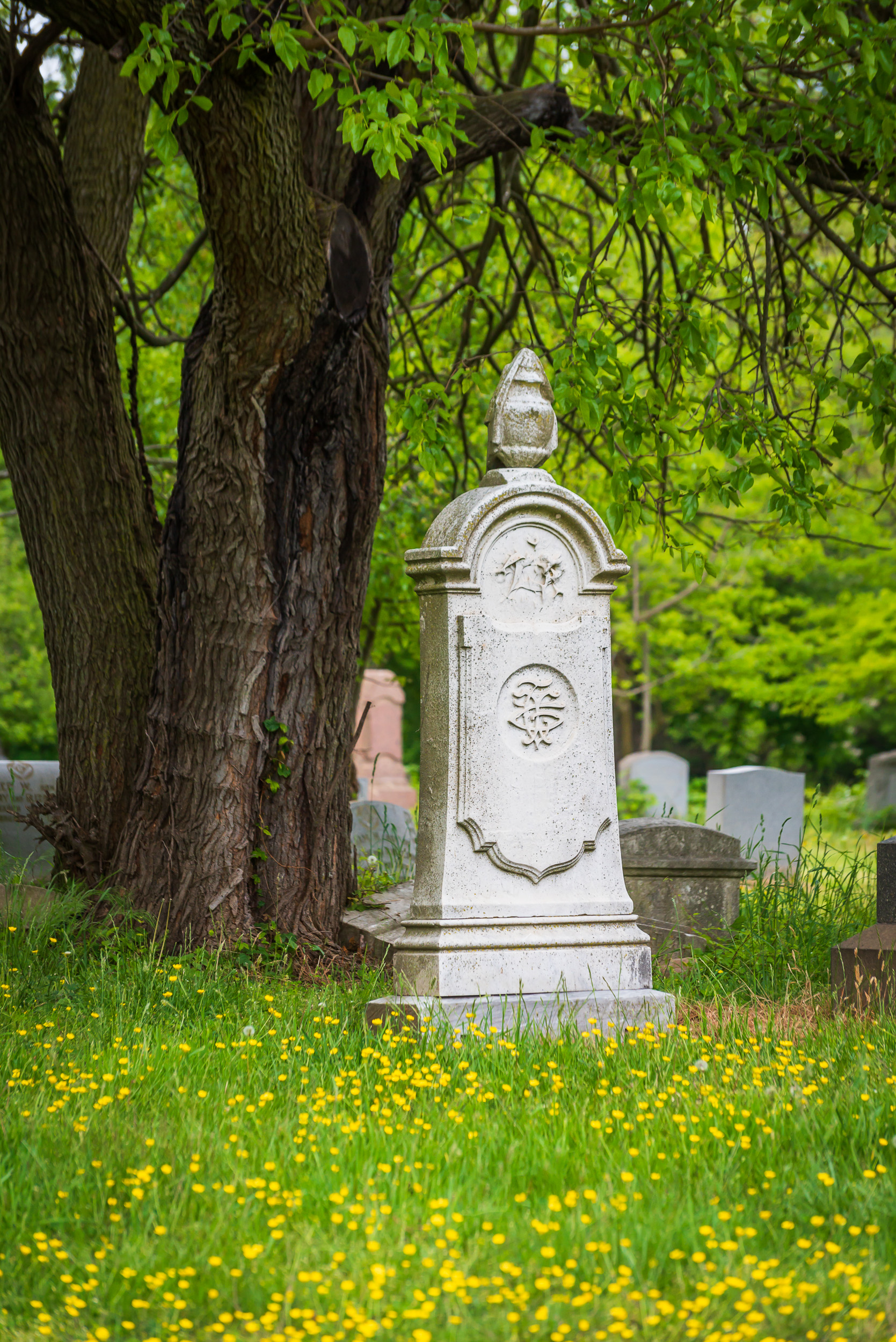
THE CEMETERY TODAY
Mount Moriah now has a hopeful feel, as volunteers have managed to clear about half of the overgrown gravesites, but seeing the tombstones still partially hidden in the woods can make a visit here an eerie, somewhat otherworldly experience. The Friends group holds monthly “bring your own tools” workdays that attract a dedicated group of taphophiles (lovers of cemeteries) as well as volunteers from Scout troops, schools, corporations like Comcast and Subaru, and other organizations. The brownstone gatehouse—a perennial entry on the “endangered buildings” lists of local historic preservation societies—is in dilapidated but stable condition and awaiting funds for restoration. In contrast, the two military burial sites on the grounds—the Naval Plot and the Soldiers’ Lot, each with graves dating back to the Civil War—feature rows of neat headstones that have been continuously and meticulously maintained by the U.S. Department of Veterans Affairs.
For directions, open hours, and other information, visit friendsofmountmoriahcemetery.org. For notices of volunteer workdays and other events, go to @friendsofmountmoriahcemetery on Facebook. Email info@fommci.org for details on guided tours.
